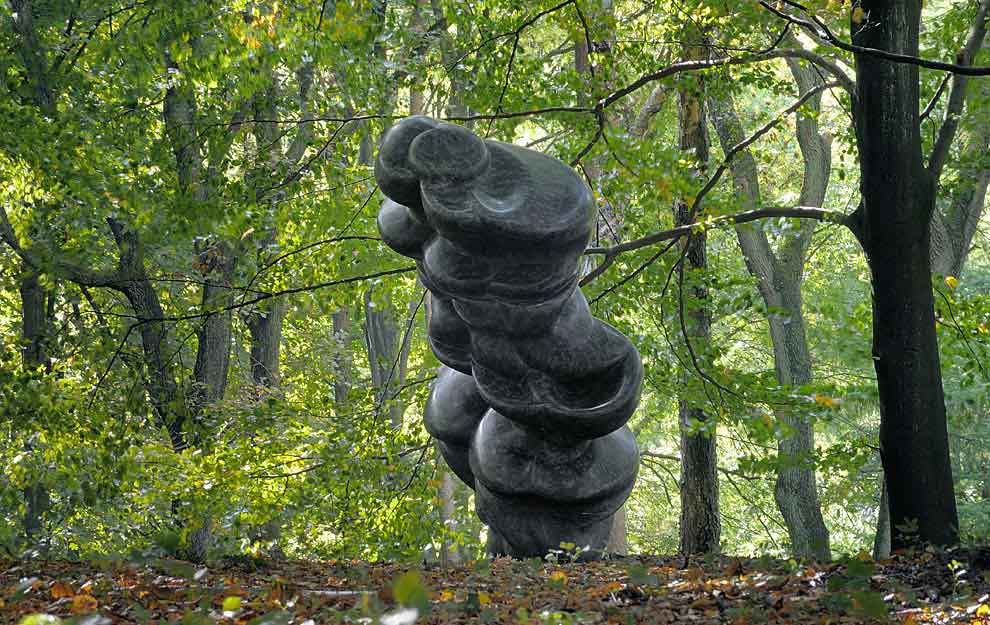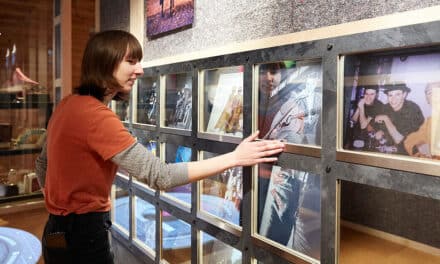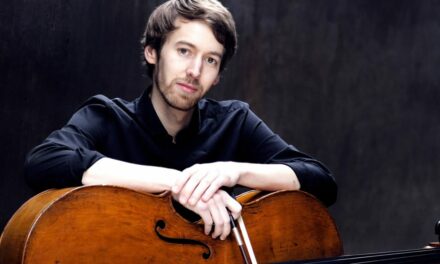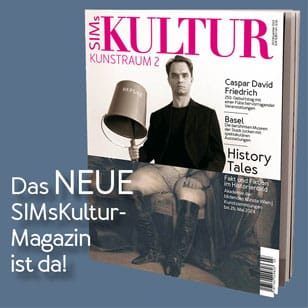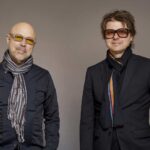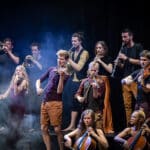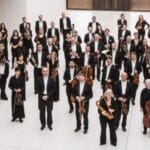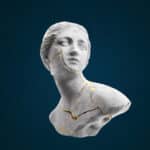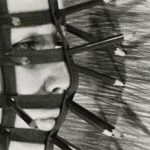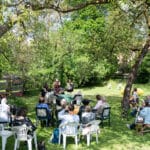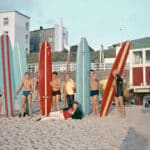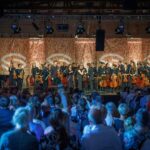The Waldfrieden sculpture park is located above the Wupper valley in the Christbusch forest area between the city centers of Elberfeld and Barmen. It extends steadily uphill over an area of twelve hectares into one of the many hillside forests that surround Wuppertal. Old deciduous trees line the long serpentine road that leads to the park grounds. Individual sculptures by Tony Cragg are already on display on the embankments of the access road. At the last bend in the road is the café, which is located on the rough first floor of a residential building built in 1914. From here, a staircase leads up to the entrance building to the sculpture park, which was built in 2007. The staircase runs along one of the mighty, sandstone-clad retaining walls that secure the terraced garden grounds of Villa Waldfrieden towards the valley. The landscaping and gardens were part of the overall Waldfrieden concept, which the architect Franz Krause developed for the entrepreneur Kurt Herberts immediately after the Second World War. At the heart of this project was the construction of the two-storey villa, which was built between 1947 and 1950 on the foundations of a previous building that had been destroyed in the war. Its interior design is dynamically adapted to the movements of the residents, while the exterior is organically integrated into the landscape and natural surroundings.
At the edge of the large lawn surrounding the house and bordering the park forest, a six-metre-high exhibition pavilion with glass walls was built in 2007, covering an area of nineteen by fourteen meters. The purist glass room is designed for the presentation of sculptures that cannot be shown outdoors. Thanks to its transparency, however, the exhibits relate to the surrounding nature and its color and light moods.
Exhibition: Joseph Beuys - Perpetual Motion
For this exhibition, over 20 exhibits from the years 1949 to 1985 have been selected from the private collections of the gallery owners Thaddaeus Ropac, Bernd and Verena Klüser, the journalist Linde Rohr-Bongard and the Viehof Collection, formerly the Speck Collection, all of which are connected to Joseph Beuys and his work through their own profound history. At the same time, they are close to Tony Cragg, who, on the occasion of Beuys' 100th birthday, had the desideratum to realize an exhibition of his works in a pavilion of the Skulpturenpark Waldfrieden. Cragg himself had first met Beuys in 1972 at the Whitechapel Gallery in London. The then 23-year-old Cragg was deeply impressed by Beuys' charismatic presentation, his encyclopaedic knowledge, his brilliant associative skills and the social aspirations of his concept of art. The exhibits he has now selected for Wuppertal from Joseph Beuys' companions are interlinked in a dialog and, in the Beuysian sense, are a battery for storing energy, a reservoir of potential and ideas. "Joseph Beuys. Perpetual Motion" is an occasion to reexamine and discuss the work of Joseph Beuys, who, as an artist and political activist, as a hypersensitive person and a sharply rational thinker, was committed to the realization of a utopia. It will be accompanied by a series of lectures that will shed light on the comprehensive theory of the artist, who demanded "Every move must be right" for every moment of his artistic work.
March 28 to June 20, 2021

